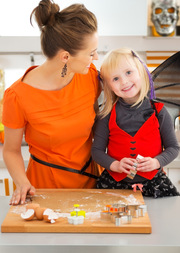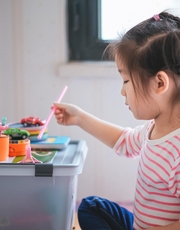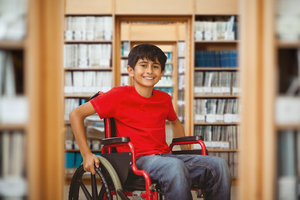Tattoos, for as long as humanity remembers, have been an intimate canvas of stories, symbols, and sentiments. But today, these etchings have evolved, taking on intricate forms and profound meanings. Among them, geometric tattoo designs stand out, weaving age-old shapes with the modern thirst for unique self-expression.
Now, I know what some of you might be thinking, especially the parents among us: “Tattoos? Aren’t they just impulsive decisions etched on the skin?” I get it. As a parent, it’s only natural to be concerned about the choices our children make, especially ones as permanent as tattoos.
As we scroll through our social media feeds, there’s no denying the boom of tattoo showcases, especially among the younger generation. These platforms have transformed into digital diaries, where geometric tattoos are more than just designs—they’re a badge of individuality. Yet, with this bold online display comes the responsibility of safety and privacy, something every parent and tattoo lover should be conscious of.
Before we proceed, consider this: A survey from the Pew Research Center reveals that nearly 38% of young adults have at least one tattoo. And a significant chunk of these tattoos? You guessed it, geometric designs. Their symmetry, significance, and sheer beauty resonate deeply with many, becoming a symbol of their identity, both offline and online.
Why is Geometry so Appealing in Art?
One might think, why this fascination with geometry? Why did our ancestors, separated by vast oceans and centuries, converge on these same geometric shapes to express their beliefs, stories, and artistic flair?
Liam, a renowned tattoo artist with over two decades in the field, shares, “Geometry, in its simplest and most intricate forms, resonates with a universal language of harmony, balance, and cosmic order. Whether it’s the perfect triangles of the pyramids or the meticulous circles in Aztec patterns, these geometric shapes echo a deep-rooted human quest for connection—with nature, the cosmos, and with each other.”
It’s no wonder, then, that this ancient artistry has inked its way into the modern world of tattoos. In fact, tattoo enthusiasts are increasingly opting for geometric designs, seeing them not just as mere patterns, but as a bridge to an age-old legacy.
Geometric Tattoos Are More than Just Shapes
If you’ve ever paused to admire the repeating patterns in nature—the petals of a flower, the honeycomb of a beehive, or the spirals of a galaxy—you’ve inadvertently appreciated the beauty of geometry. Geometry, as an art form, is woven into the very fabric of nature, and geometric tattoos, in essence, encapsulate this natural marvel onto our skin.
Let’s break this down a little further.
Mandalas: Originating from the ancient Sanskrit word meaning ‘circle’, mandalas are intricate designs that emanate outwards from a central point. Beyond their visual appeal, they’re steeped in spiritual symbolism, often representing unity, eternity, and the universe’s interconnectedness. For many tattoo enthusiasts, inking a mandala is more than just flaunting a design; it’s about encapsulating a universe of meaning on their skin.
Sacred Geometry: Now, this is where it gets even more profound. Sacred geometry refers to patterns and shapes that are foundational to our world—like the Flower of Life or the Seed of Life. These patterns are believed to represent the ancient secrets of the universe. Tattooing such designs isn’t just a trend but a profound alignment with universal energies.

Today, Personal Ink is the Digital Footprint
Once upon a time, a tattoo was a hushed whisper of rebellion or a deeply personal emblem worn close to the heart, seldom shown to the world. Today, the script has flipped, with tattoos – especially the geometric ones – roaring across digital platforms.
We live in the age of Instagram, Pinterest, and TikTok – platforms where visuals speak louder than words. A simple scroll reveals users proudly flaunting their tattoos, turning their skin into galleries of personal tales and artistic fervor.
But why this digital display? Why showcase something so intimate to a vast, often unknown, audience? The answer lies in the evolving realm of personal branding. Tattoos, especially the visually appealing geometric designs, have become a crucial facet of personal identity online. They serve as badges, signifiers of uniqueness in digital sameness. For many, their intricate patterns are not just adornments but also extensions of their personalities, tools of distinction in the vast realm of online personas.
Balancing Act
As thrilling as it is to share this piece of oneself with the world, there’s another side to the coin: online privacy. For every genuine admirer, there might be a prying eye with not-so-honorable intentions. This digital age’s paradox is the constant tussle between self-expression and safety.
Parents, in particular, often grapple with this. On one hand, they recognize the joy their child feels in celebrating their personal art. On the other, the protective instinct kicks in, raising alarms about oversharing in the unpredictable online realm. The concerns are valid.
So, how does one bask in the pride of their geometric artistry while ensuring they’re not leaving themselves vulnerable?
- Be Selective: Not every platform needs to see your tattoo. Choose where you post wisely.
- Limit Audience: Platforms like Instagram offer features to restrict who views your posts. Use them.
- Avoid Geotags: That tattoo from a studio in Bali might be a cherished memory, but announcing your location might not be the best idea.
- Educate: For the younger lot, especially, understanding the implications of what they share is crucial. Sit them down, and have a chat. Knowledge, as they say, is power.
Geometric Tattoo Designs as Offline and Online Self-Expression for Gen-Z
Today’s youth, often referred to as Generation Z, have grown up in a world where the lines between offline and online personas are increasingly blurred.
Let’s begin with understanding their perspective. To Gen-Z, tattoos are more than just ink; they’re stories waiting to be told. It might be about that life-changing trip to the Himalayas or an ode to a loved one. Mandala tattoos, for instance, have seen a surge in popularity among this age group. These designs symbolize the idea of eternity, completeness, and the universe. For many, the symmetrical patterns represent a journey, a cycle of life, or a search for a personal center.
When these mandala tattoos or any other designs are inked, they don’t just stay hidden beneath clothing. They’re proudly displayed on online platforms.
But why?
For many Gen-Z individuals, sharing their tattoo journey online is a form of self-expression, and an opportunity to engage with like-minded communities.
Gen-Z Are the Digital Tattoo Ambassadors
Take, for example, Luna, a 23-year-old digital content creator, has captivated millions with her tattoo journey. From her first petite mandala tattoo on her wrist to the elaborate back piece she showcased last month, her followers have been part of every step.
Every time Luna shares a new tattoo experience, her engagement skyrockets. Comments flood in with words of admiration, stories of personal tattoo journeys, and yes, concerns and inquiries about the tattooing process. Luna isn’t just showcasing art; she’s fostering a community.
Tips for Parents on Approaching Conversations about Tattoos
Dear parents, I’ve been in your shoes, clutching a steaming mug of coffee, trying to decode the enigmatic world of our youngsters. And when it comes to tattoos, the journey can be a tad more daunting.
Firstly, breathe. Your child’s choice to get a tattoo, especially a geometric one, is an extension of their personality, their story. It’s not rebellion; it’s expression. When you approach the conversation, remember it’s a dialogue, not a monologue.
- Listen First: Begin by asking them the story behind their choice of a geometric pattern tattoo. You might be surprised at the depth and thought that went into their decision.
- Share, Don’t Lecture: Share your concerns, but avoid the trap of sounding judgmental. Use phrases like “I feel” or “I wonder” instead of “You shouldn’t.”
- Educate Together: Dive into the history and significance of geometric designs. When it becomes a journey of learning for both, the barriers naturally crumble.
Beyond the Design
When we hone in on the symmetry and elegance of geometric tattoos, we unearth layers brimming with therapeutic, cathartic, and spiritual significance.
Imagine, if you will, the lines of a geometric tattoo – each point, each line, each angle, meticulously calculated and defined. Isn’t life just like that? A series of events, some painful, others joyous, that come together to form the tapestry of our existence. This very realization is what makes geometric tattoos an anchor for many in turbulent times.
“Tattoos can heal souls,” says Mia Jennings, a renowned therapeutic tattoo artist. Mia has witnessed firsthand the transformative power of ink. “Many walk into my studio with past traumas or memories they wish to reclaim. Geometric designs, with their balanced and orderly nature, often provide that very sense of balance and order they’re yearning for.”
It’s essential for parents, especially those skeptical or concerned about tattoos, to recognize this emerging field of therapeutic tattooing. Yes, there are safety concerns, especially in the digital age where sharing one’s tattoo online can attract both admiration and unwanted attention. But when done responsibly, tattoos, particularly geometric ones, can be a source of immense personal strength.
The numbers add depth to this narrative. A study conducted by the World Journal of Psychiatry noted that individuals with tattoos, particularly those with deeper personal meanings, often reported improved self-esteem and a renewed sense of purpose. And it’s no surprise that geometric tattoos, with their structured designs, resonate deeply with those seeking order in chaos.
Wrap Up!
To the tattoo enthusiasts reading this, the catharsis and therapy that geometric designs offer are perhaps something you’ve experienced or something you’re seeking.
And to the concerned parents, I can sense the apprehension some parents might feel reading this. “Why permanently ink something that might just be a passing phase?” But here’s where understanding is crucial. For many, especially the younger generation, these tattoos are a canvas of their beliefs, values, and personal journeys. It’s a testament to their resilience, memories, and, most importantly, their identities.
But how can parents be part of this journey, ensuring safety, especially in a digital age where showing off a fresh tattoo on Instagram or Facebook is the norm?
Safety in Sharing Their Inked Tales Online
The digital realm offers a platform for our kids to flaunt their geometric masterpieces, narrate their tattoo tales, and find communities with shared passions. But with this openness comes vulnerabilities. Guide them on safe online practices.
- Privacy First: Encourage them to use platforms where they can control who sees their posts. Instagram, for instance, allows private accounts, ensuring only approved followers can view the content.
- No Personal Information: A photo of their new tattoo is great; a photo revealing their location isn’t. Remind them to avoid sharing specifics.
- Engage in Their Digital World: Show genuine interest in their online activities. Celebrate their tattoo stories and, subtly, guide them on safe sharing practices.







 Ava Roman (she/her) is the Managing Editor of
Ava Roman (she/her) is the Managing Editor of


